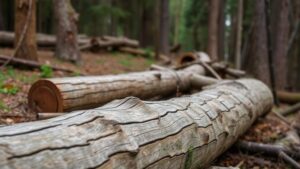Unearthing Rare Vintage Bottles in Abandoned Farmsteads
Unearthing Rare Vintage Bottles in Abandoned Farmsteads
Exploring abandoned farmsteads can be a treasure trove for collectors and enthusiasts of vintage bottles. The charm of these artifacts offers a window into the past, revealing stories of the people who once inhabited these places. This article delves into the techniques, historical significance, and considerations vital for anyone interested in unearthing these rare items.
The Historical Context of Vintage Bottles
Vintage bottles often serve as tangible connections to history. Materials and designs can signal the era they belong to, often reflecting the social practices, brands, and consumer behaviors of their time. For example, antique soda bottles may reflect local breweries production methods during the late 19th century. Manufacturing techniques such as the use of blow-blown glass or machine-made jars can inform collectors about the evolution of bottle manufacturing.
- 19th Century Bottles: Often embossed with the manufacturer’s name, these bottles can provide insights into local businesses and consumer choices.
- Prohibition Era Bottles: Many bottles from the 1920s reflect the creative efforts of bootleggers, often featuring handmade designs and labeled with deceptive names.
Identifying Valuable Bottles
Not all vintage bottles hold significant value. Understanding the traits that make a bottle desirable is crucial. Collectors typically look for the following features:
- Rarity: Limited production runs or regional bottling can increase a bottles value. For example, bottles from small-town distilleries that no longer exist are often sought after.
- Condition: Mint condition bottles free from chips or cracks are preferred. “corked” aspect, which your bottles neck retains can also play a crucial role in its value.
- Age: Generally, the older the bottle, the higher potential for value, provided it meets other criteria as well.
Techniques for Discovering Vintage Bottles
Unearthing vintage bottles requires not just enthusiasm but also strategic planning. Here are some recommended techniques for effective exploration:
- Research: Before visiting a site, conduct thorough research. Look into local history, previous owners, and any known bottling companies from the area. Resources include historical societies and local archives.
- Site Scouting: Evaluate the layout of an abandoned farmstead. Areas around barns, old pathways, or near former garbage disposal sites tend to yield the best finds.
- Excavation Tools: Equip yourself with the right tools like trowels, shovels, and brushes. These tools help minimize damage to the bottles and ensure careful digging.
Legal and Ethical Considerations
Before embarking on an adventure to search for vintage bottles, it is vital to understand the legal and ethical implications of your actions. Several points must be considered:
- Land Ownership: Always seek permission from property owners before exploring abandoned sites. Trespassing can lead to legal penalties and damages.
- Preservation: If you discover unique or historically significant bottles, consider reporting your findings to local historical societies or museums. This ensures that priceless artifacts may be preserved for future generations.
Case Study: The Hidden Treasures of Lost Barns
A compelling example of bottle discovery comes from a series of recoveries performed in the rural Midwest, where explorers unearthed valuable glass artifacts in collapsing barns. Among the findings was a collection of miniatures produced by local distillers during the Prohibition era. These bottles not only captured the essence of local brewing history but also fetched substantial amounts at auctions. The report from the auction revealed that one of the bottles sold for over $1,500, emphasizing the potential financial benefit of successful digs.
Real-World Applications and Takeaways
For collectors and hobbyists, the quest to find rare vintage bottles can become a deeply enriching experience. process supports historical research, contributes to art and culture preservation, and can be financially rewarding. Also, this activity fosters a connection between individuals and their local heritage. Key takeaways include:
- Engage in thorough research about local histories and bottling practices.
- Prepare adequately by equipping yourself with the necessary tools and permissions.
- Be mindful of legal implications and aim to preserve historical artifacts.
To wrap up, unearthing rare vintage bottles in abandoned farmsteads not only connects enthusiasts to history but also unlocks the potential for significant discoveries. By understanding the complexities of vintage bottles and adhering to ethical practices, your journey into the past can be both rewarding and responsible.

